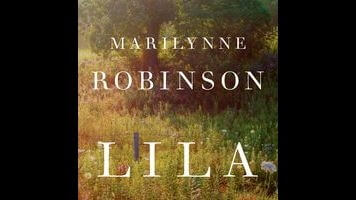With Lila, Marilynne Robinson crafts one of the unlikeliest trilogies in modern American lit

For most of her career, no one thought Marilynne Robinson would write fiction again. After releasing Housekeeping in 1980, she waited 24 years before her next novel, Gilead. But it was worth the wait: Gilead is one of the great American novels of the early 21st century, and deserved its 2005 Pulitzer Prize. Fans might have expected Robinson to retreat again, and spend another quarter-century crafting a masterpiece. Instead, she’s released two sequels, of sorts, to Gilead: Home, in 2008, and now Lila.
While Gilead is told from the prospective of small-town pastor John Ames as he comes to grips with his pending mortality, Lila focuses on his wife, and the events leading up to her arrival in Gilead, Iowa. Robinson deftly weaves the past and present together, with the traumas of Lila’s past abutting her first interactions with the elderly Ames, and the unexpected love that blooms between them. A collage of memory and meditation, Lila manages to fill in aspects of Gilead without ever feeling superfluous (the same cannot be said for Home, which never stepped out from behind its sibling’s shadow).
Lila the novel wouldn’t work without the titular character being as strong as she is. A possible orphan taken and raised by a group of itinerant workers, she grows up in the middle of the Depression, working odd jobs from when she is able to walk. After a hard and ungrounded life, Lila is distrustful, and unexpectant of any real happiness. The kindness from Ames and the people of Gilead is so strange to her as to be alien, and as they grow closer she finds herself unable to commit to a new life, not because it seems too good to be true, but because it is so far removed from anything she’s ever known.
Ostensibly, one should be able to read Lila without ever encountering Gilead, since the events of the former lead up to the latter. But it’s not clear that Lila, as good as it is, would stand quite as tall without its predecessor. John Ames seems impossibly kind here (something Lila herself feels), though those familiar with Gilead and Home will be able to surround this seeming-perfection with the warts he shows in the other books. Likewise, the friendship between Ames and John Boughton, another minister in town, seems to rest on the idea that readers will be familiar with their rapport by now, having experienced two books of it. Readers are better off treating Lila as another entry in a series.
That caveat does not diminish Lila’s beauty. Unlike Home, which essentially told the same story as Gilead from a different perspective, without bringing much new to the table, Lila expands the little world Robinson has created. It successfully argues that there are new avenues to follow in the margins of a novel that will undoubtedly be considered her seminal work. It’s unclear whether she can get any more mileage out of this little town in Iowa, but Lila is a wonderful last journey through it.